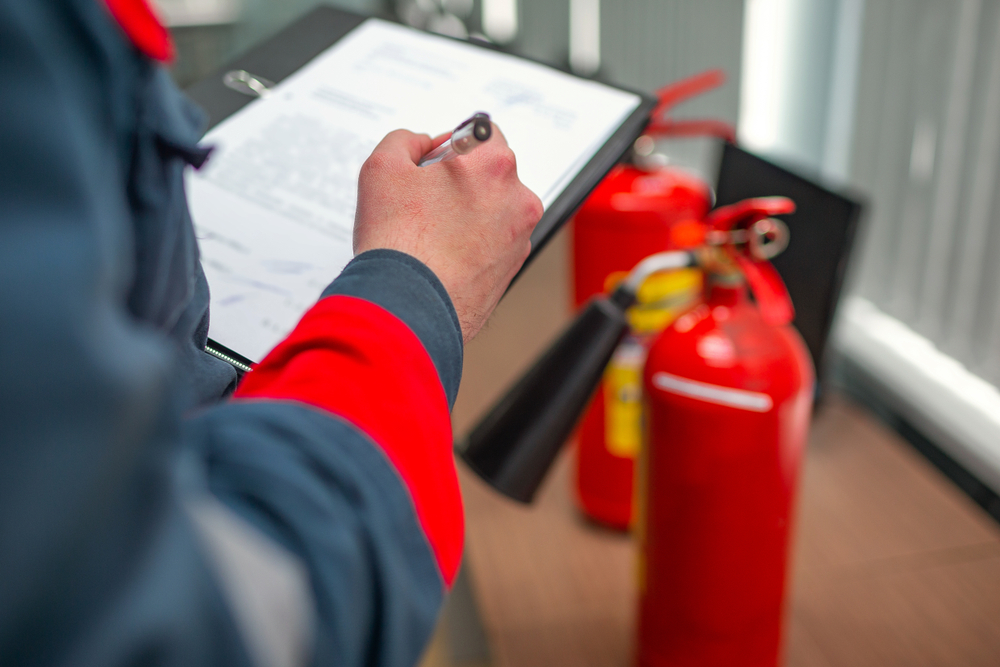PEPA’s Long History of Code Work Deems Current Fire Safety Measures as Effective While Pushing for Addressing Real Risks Like Combustible Mulch
In June 2017, a horrific fire broke out in a 24-story Grenfell Tower apartment building in London, England, that killed 72 people and injured 70 more. A faulty electrical system started the fire, but the building’s poor maintenance and improper use of building systems – including a rain screen system made of aluminum composite cladding filled with combustible foam— accelerated the fire to the point where it was nearly impossible for people to escape.

Fortunately, this type of construction would not be allowed in the U.S. because of the current code regulations. Yet, the causes of this unfortunate fire have provoked a refocus on building material testing requirements on this side of the pond.
I greatly appreciate the passion and vigilance behind this movement, which has pushed for the broader adoption of the National Fire Protection Association’s (NFPA) 285, the test for the fire growth of combustible exterior building systems on high-rise structures. However, using this test is inappropriate for smaller, less complicated structures and will add cost without increasing protection.
Fire Safety Efforts Spark a Passion
I am an Albany, New York native and learned about the Triangle Shirtwaist Factory Fire in 1911 – a watershed moment for occupational and fire building safety here in the U.S. I have dedicated a significant portion of my career in the building construction industry to code development work. I am proud to have worked with the Polymeric Exterior Products Association’s (PEPA) Code Development Work Group, which has invested considerable work in code cycles to introduce and/or improve safety codes that concentrate on wind, moisture and fire.
Because of our organization’s extensive experience in fire safety code development, we can confidently assert that the NFPA 285 tests are redundant in relation to existing codes, extremely costly and often misapplied. Here’s why:
- The NFPA 285 test was designed for high-rise buildings. It was not designed for single-family homes and smaller multi-unit dwellings that use polymeric exteriors, as the risk conditions are significantly different and less than those of massive high-rise buildings, which can have thousands of people residing in them. The driving force lobbying for new test requirements is now trying to have the NFPA 285 applied to smaller applications.
- The polymeric cladding products we represent can be used with rated assemblies in high-density settings closer than 10 feet between homes (or five feet to the property line). The requirements for fire risk prevention are already in place and have proven highly effective.
- Rigorous product tests are currently in place, especially for vinyl siding and other polymeric exterior materials. If products are correctly installed, fire risk is minimized or avoided altogether.
- A deeper examination of the Grenfell Tower fire would reveal that the building plans would not have been code-compliant in the U.S., thus, its construction would never have been allowed.
To reiterate, PEPA takes fire prevention and resistance very seriously regarding the products we represent and the homes constructed and renovated with them. We do not support creating new requirements that address the same issues that the current requirements adequately cover.
Vinyl building materials are inherently flame-retardant and other polymeric products feature flame retardants to increase their fire safety characteristics. It’s important to note that we don’t rely on our own knowledge of our products’ fire safety assets. PEPA continues to be vigilant in its code and standard development work and advocates for educating code officials, contractors and other stakeholders.
This includes:
- The publication of a code compliance document that demonstrates how vinyl siding and other polymeric cladding minimize fire risk and how these products should be installed to mitigate fire risk properly.
- The review of code change proposals that affect cladding and new PEPA product categories – polymeric roofing and vinyl fencing – with the potential to support or oppose proposals.
- Reinforcing flame spread and fire-rated assemblies as continued valid measures of products’ fire performance.
- Ensuring the new wildfire standard International Code Council’s (ICC) ICC 605 Standard for Residential Construction in Regions with Wildfire Hazard is developed fairly.
Regarding this final point, the recent wildfires in Southern California are the second driver behind this extra testing requirements movement. Our CDWG has been working to update the International Fire Code (IFC) to limit fire exposure risk to home exteriors. We recently helped introduce IFC 304.1.3.1, which would prohibit the installation of combustible mulch within five feet of apartments and hotels. This has been shown to be a hazard and a source of ignition for many fires that have started outside buildings. We also support a movement in the West known as “zero-scaping” that calls for using rocks instead of mulch and eliminating other combustible items near the house.
To learn more about PEPA’s commitment and contributions to mitigating fire risk to our homes, please contact me at mdobson@polymericexteriors.org.
_____________________________________________________________________________________________________________
Matt Dobson has served PEPA for over 20 years. He has also acted as an industry representative on the ICC International Building Code’s Fire Safety Code Development Committee, NFPA 1 Fire Code Technical Committee and NFPA 101 Life Safety Code Technical Committee.